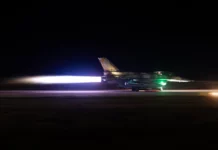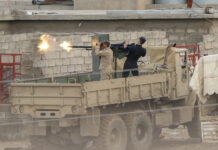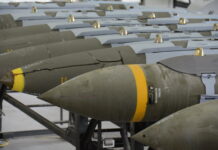
Pentagon enhances Middle East defence posture amid ongoing conflict in the region
Peter Felstead
The US Department of Defense (DoD) has taken steps to further enhance the defence posture of US forces throughout the Middle East region to deter aggression and mitigate the risk of a broader regional conflict, the Pentagon announced at the end of September 2024.
The moves followed Israel’s targeted assassination of Hassan Nasrallah, leader of the Iran-backed Shia militant group Hezbollah, in Lebanon on 27 September and immediately prior to the Israel Defense Forces (IDF) proceeding on 1 October 2024 with what was described as a “limited ground operation” into Lebanon to target Hezbollah infrastructure.
The IDF incursions prompted an Iranian missile attack on Israel on the evening on 1 October, with the IDF putting the number of missiles fired at around 180.
In a press briefing on 1 October Major General Patrick Ryder, the US Department of Defense’s press secretary, said two US Navy destroyers in the region were used to fire interceptors at the Iranian missiles.
In a press statement issued on 30 September the US DoD said that US Defense Secretary Lloyd J Austin, in providing guidance to his team, “stressed that the United States is determined to prevent Iran and Iranian-backed partners and proxies from exploiting the situation or expanding the conflict”.
“Austin made clear that should Iran, its partners, or its proxies use this moment to target American personnel or interests in the region, the United States will take every necessary measure to defend our people,” the press statement added.
The measures the US DoD is taking include ordering the USS Abraham Lincoln carrier strike group to remain in the US Central Command area of operations past its regular rotation date; reinforcement of US air defence capabilities and using US forces rotating into the region to augment rather than replace forces already there, Deputy Pentagon Press Secretary Sabrina Singh told media on 30 September.
Although not able to discuss specific timelines and numbers due to operational security concerns, Singh said that some of the augmented forces being sent to the region include F-16, F-15E and F-22 fighter aircraft, as well as A-10 attack aircraft and associated personnel.
Meanwhile, it could be argued that, following the Iranian missile barrage of 1 October and Israeli Prime Minister Benjamin Netanyahu’s Iran “made a big mistake … and will pay for it”, the ball is somewhat in Israel’s court regarding further escalation of the conflict.















